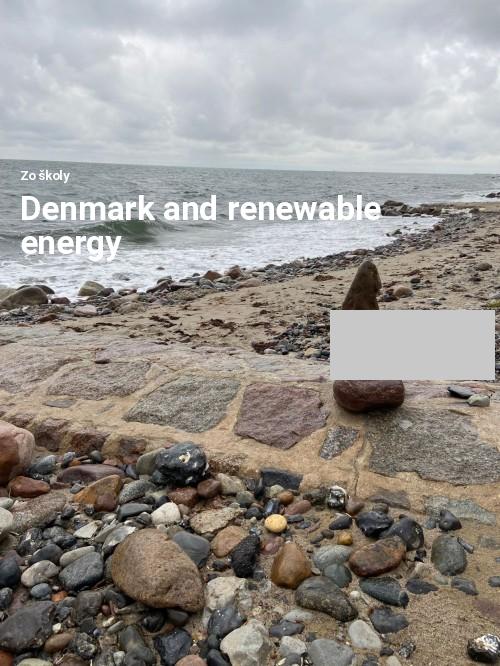Denmark and renewable energy
13.12.2022 19:57
Zo školy
Autor : Adam Kováč, Gymnázium Ivana Kupca, Hlohovec
Denmark is a leading country in renewable energy. They use 50 percent of their energy consumption from renewable sources like solar and wind but it is even more if we consider biomass as a part of renewable energy. This is what we came across when we were visiting Denmark and we were stunned, at what a country could become if its economy and politics are thriving.
As a country of high standards their average wages are around 5500 euros per month but if you want to eat a good dinner, you can expect to pay a bit more. However, we can say, from our own experience, that it pays off. Every part of the country is clean and tidy. No trash lying on the ground, no holes in the roads, and everything is new or refurbished. This was our first impression of the country as a whole, but when we looked deeper, it became even more amazing.
After the flight, we went to the south and we happened to see windmills all over the country. Even on private farms. And there are 2 types of windmills. The first is onshore and the second one is offshore. Considering they always have windy weather it is a smart solution. No nuclear power plants, and almost no coal or oil power plants. 80 percent of the whole energy use is from renewables, from which 50 percent is carbon-free. Their infrastructure is made to achieve carbon neutrality in 2050, and they are making huge progress. They even use biofuel instead of fossils. Moreover, they have solar panels on the roofs of their houses and schools, so they can manage to use their energy and there is no need to pay huge amounts of money to electricity providers.
One school that we visited had a plan to build solar panels on their roofs to provide them with enough electricity to be completely sustainable by themselves. They have already built solar panels on one of the roofs and it provided them with 25 percent lower energy cost. Another point is that they have car chargers in the schools, which was unbelievable.
In addition, the Danish government is putting taxes on normal combustion cars and lowering taxes on electric cars to faster achieve the carbon neutrality goal. And as we have seen, electric cars are in the country extremely popular. Almost 50 percent of all cars that we have seen were electric.
And in the end, what did we learn during our trip? With enough willpower and discipline, even Slovakia can become a carbon-free country. But the government and citizens should stop just speaking about it and start making the actual thing happen.
